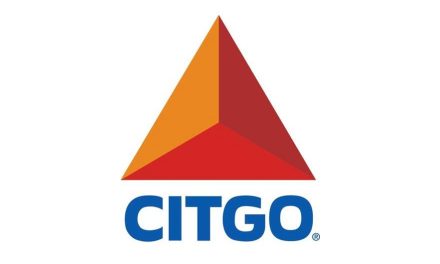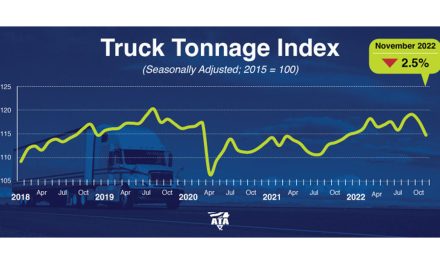U.S. Seeks to Become Net Energy Exporter
- New policy seeks net exporter status for U.S. LNG
- Arab core of OPEC splintering
- Low volatility yields cheaper options
- Qatar will expand production of natural gas to 100 million MT
Sincerely, Alan Levine, Chairman of Powerhouse

The Matrix
The second half of 2017 opened with several unresolved issues that, once decided, could set the level for oil and natural gas prices going forward. There are three such uncertainties that Powerhouse believes should be closely monitored.
1. The objective of energy independence for the United States has become something more in the current political climate. The idea of global dominance is gaining prominence. At its heart, global dominance seeks to make the United States a net energy exporter. In particular, the focus has been competing in European markets for American natural gas. The geopolitical implications could be profound. Russia has been a major supplier of natural gas to Europe. It has used supply disruptions for political purpose several times in the past. U.S. liquified natural gas (LNG) is seen by the U.S. government as a partial counterweight to Russian regional influence.
2. Several Arab states have cut diplomatic ties with Qatar. The break is ostensibly because Qatar “destabilized” the region. The immediate impact on oil balances is likely to be small. The effect on global natural gas supplies may be another matter. See our comments on natural gas below. More importantly, however, is the break in regional cooperation on petroleum matters. Internal dissent could take the form of ignoring agreed Gulf Coordinating Council (GCC) production, adding to current carve outs for Libya and Nigeria.
3. Geopolitical disruptions like those among the members of the GCC would usually present as highly volatile prices. Uncertainty is an incubator of price variation. On the other hand, supply availability tempers excessive reactions to unexpected events. And the recovery of production in the United States fills the bill, offering the reason for calm, even complacent reaction to events that otherwise could have moved prices substantially.
The accompanying chart shows monthly prices for West Texas Intermediate (WTI) crude oil since 2005. Notable on the chart are two major price sell-offs. The 2008 drop reflects that year’s financial meltdown, and more recently, a decline in price starting in July 2014 at $107.73, bottoming at $26.05 in March, 2016 before its recovery in the months since.
The lower panel shows a measure of volatility that has moved steadily lower since August 2016 when it topped at 49% (such a number means, if prices behave as they had in the previous ten periods, one could expect prices to vary by 49% on an annualized basis). Most recently, volatility for WTI has fallen below 16%.
Lower volatility has muted the market’s response to geopolitical events. It also reflects the knowledge that the United States, a politically stable producer, is providing more of the world’s oil with less risk to the market.
Nothing lasts forever. Expansion of supply sources and reduced violent activity in oil rich areas have resulted in low volatility and more attractive option premiums. Powerhouse cannot know when or in which direction prices might move when volatility expands.
Technical analysts have the concept of the “coil.” This is a triangular chart pattern that, like a coil, contracts as it approaches its apex. Inevitably, prices break out of the wedge, often violently. Currently, prices remain within tight ranges. Cheap options are offering hedgers an unusual opportunity to place protective hedges economically.
Supply/Demand Balances
Supply/demand data in the United States for the week ending June 30, 2017, were released by the Energy Information Administration (EIA).
Total commercial stocks of petroleum decreased 13.4 million barrels during the week ending June 30, 2017.
Draws were reported in stocks of gasoline, fuel ethanol, K-jet fuel, distillates, residual fuel and other oils. A build was reported in stocks of propane.
Commercial crude oil supplies in the United States decreased to 502.9 million barrels, a draw of 6.3 million barrels.
Crude oil supplies decreased in all five of the PAD Districts. PAD District 1 (East Coast) crude oil stocks fell 1.6 million barrels, PAD District 2 (Midwest) crude stocks declined 1.6 million barrels, PADD 3 (Gulf Coast) crude oil stocks retreated 1.1 million barrels, PADD 4 (Rockies) crude oil stocks decreased 0.8 million barrels and PADD 5 (West Coast) stocks dropped 1.2 million barrels.
Cushing, Oklahoma, inventories decreased 1.3 million barrels from the previous report week to 59.5 million barrels.
Domestic crude oil production increased 88,000 barrels daily to 9.338 million barrels per day.
Crude oil imports averaged 7.742 million barrels per day, a daily decrease of 274,000 barrels. Exports rose 240,000 barrels daily to 768,000 barrels per day.
Refineries used 93.6% of capacity, an increase of 1.1 percentage points from the previous report week.
Crude oil inputs to refineries increased 251,000 barrels daily. There were 17.141 million barrels per day of crude oil run to facilities.
Gross inputs, which include blending stocks, grew 206,000 barrels daily to 17.422 million barrels daily.
Total petroleum product inventories saw a decrease of 7.1 million barrels from the previous report week.
Gasoline stocks decreased 3.7 million barrels; total stocks are 237.3 million barrels.
Demand for gasoline grew 167,000 barrels per day to 9.705 million barrels daily.
Total product demand increased 2.579 million barrels daily to 22.225 million barrels per day.
Distillate fuel oil supply fell 1.9 million barrels to 150.4 million barrels. National distillate demand was reported at 4.322 million barrels per day during the report week. This was a weekly increase of 293,000 barrels daily.
Propane stocks rose 2.1 million barrels; total stocks are 60.6 million barrels. Current demand is estimated at 1.161 million barrels per day, an increase of 245,000 barrels daily from the previous report week.
Natural Gas
According to the EIA:
Working gas in storage was 2,888 Bcf as of Friday, June 30, 2017, according to EIA estimates. This represents a net increase of 72 Bcf from the previous week. Stocks were 285 Bcf less than last year at this time and 187 Bcf above the five-year average of 2,701 Bcf. At 2,888 Bcf, total working gas is within the five-year historical range.

The United States is not the only country seeking to expand exports of natural gas. Russia and Australia are notable exporters too. Most interesting, perhaps, is Qatar. Already an important seller of LNG, the nation has announced expansion of production to an annual 100 million metric tons within the next five to seven years. This could increase pressure on global supplies and challenge the U.S. objective of global dominance in energy markets.
Futures trading involves significant risk and is not suitable for everyone. Transactions in securities futures, commodity and index futures and options on future markets carry a high degree of risk. The amount of initial margin is small relative to the value of the futures contract, meaning that transactions are heavily “leveraged.” A relatively small market movement will have a proportionately larger impact on the funds you have deposited or will have to deposit—this may work against you as well as for you. You may sustain a total loss of initial margin funds and any additional funds deposited with the clearing firm to maintain your position. If the market moves against your position or margin levels are increased, you may be called upon to pay substantial additional funds on short notice to maintain your position. If you fail to comply with a request for additional funds within the time prescribed, your position may be liquidated at a loss and you will be liable for any resulting deficit. Past performance may not be indicative of future results. This is not an offer to invest in any investment program.
Powerhouse is a registered affiliate of Coquest, Inc.
Was this helpful? We’d like your feedback.
Please respond to [email protected].
Copyright © 2017 Powerhouse, All rights reserved.










